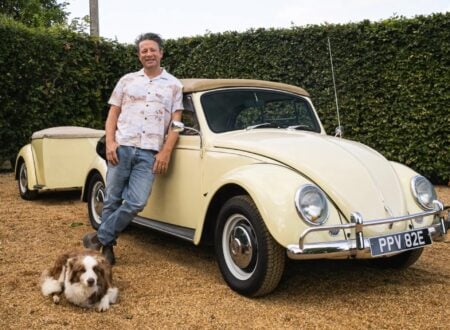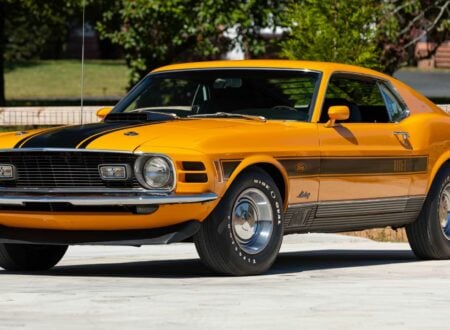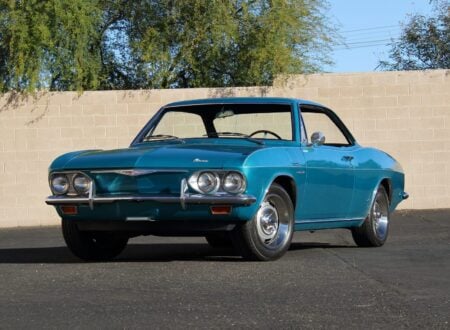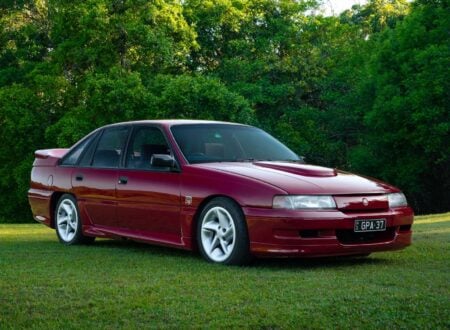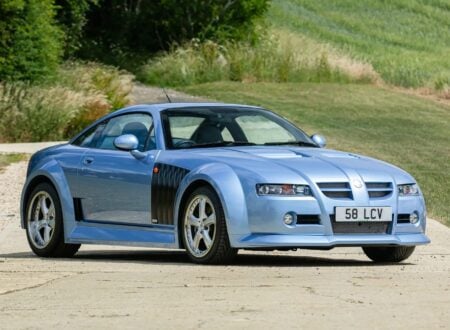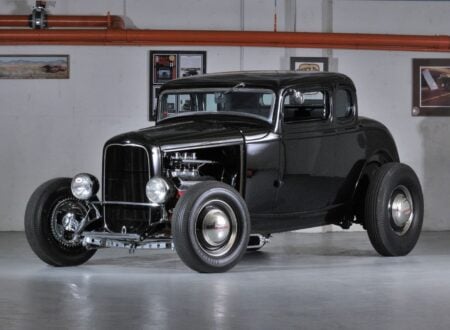The Austin 7 – An Introduction
It was in an Austin 7 that I went on my very first ever road trip. It would have been in about 1961, I was still at primary school, and a member of the school “Scripture Union” club. Our teacher, Mr. Britain, decided to fit three or four of us into his Austin 7 and take us on a day tour of famous churches in the south of England.
My family, like most people in Britain in the 1950’s and 1960’s, did not own a car, and so the road trip with Mr. Britain in his dimutive Austin 7 was quite an adventure. The little Austin 7 was a superb car for driving on English country roads and lanes, and to a group of schoolboys it was a comfortable and exciting car to ride in.
We would not have been the slightest bit aware of what the Austin 7’s standing quarter mile time might have been, nor now good, bad or indifferent its brakes or handling were: the Austin 7 was liberation from buses and trains, it was freedom on four skinny wheels and it was unforgettable.
The Austin 7, when it was first introduced in 1922, represented the freedom of the open road, the ability to go to places you simply couldn’t get to on public transport, it was the opening up of a whole new world for people who could afford one. It was sort of like Britain’s equivalent of the American Model T Ford, except a little smaller, and a little cheaper to run, but still loads of fun.
Herbert Austin, 1st Baron Austin
Herbert Austin was born in Britain in 1866 and in 1884 traveled by ship via Cape Hope to Australia where he worked in industrial settings in the city of Melbourne, particularly in the improving the design and manufacture of shearing equipment.
He joined the The Wolseley Sheep Shearing Machine Company in the city of Sydney and worked there until 1893 when he returned to Britain when that company relocated its manufacturing operations there.
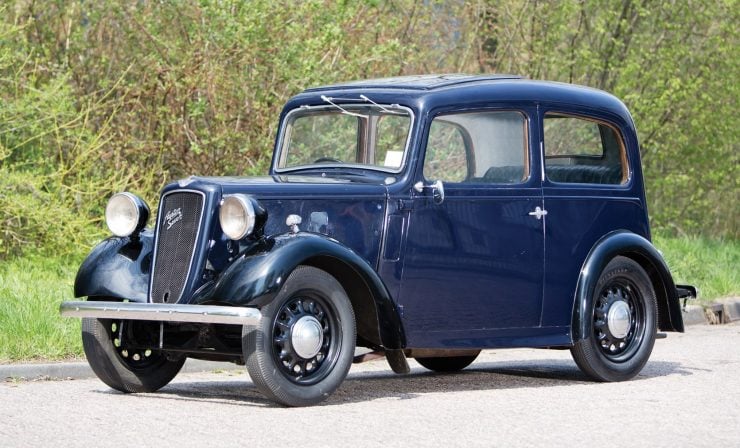
In Britain the original owner of the The Wolseley Sheep Shearing Machine Company left in 1894 so Herbert Austin took over operations and he set up manufacturing of shearing equipment that year purchasing factory premises in Aston, Birmingham.
It was in this new factory that Herbert Austin initially branched out into bicycle manufacture, and then turned his hand to the idea of building motor cars. His first cars were three wheel motorized tricycles which were sold under the Wolseley name.
In 1905 Herbert Austin went out on his own and established his own Austin motor company at Longbridge, which would later become part of the City of Birmingham. Prior to the First World War Herbert Austin offered no less than seventeen models in his automobile line-up.
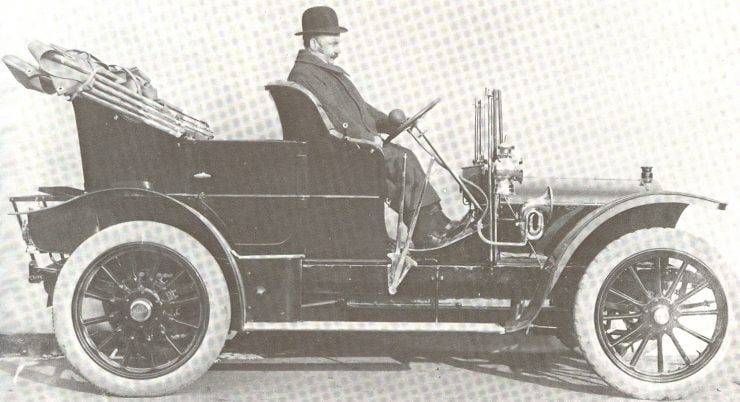
The First World War was to prove very trying for Herbert and his wife Helen. Their only son was killed in action in France in 1915.
The Austin factory was turned over to munitions production for the duration of the war and after the war’s end it proved to be very difficult to get back into the car manufacturing business, to the extent that the company was placed in receivership in 1921.
The threat of company bankruptcy spurred Herbert Austin into looking for the right solution. He could see that there would be a future in motor car manufacture, Ford’s Model T was evidence of that, but that the existing manufacturers were either making quite large automobiles, or they were making small cycle cars.
Herbert Austin determined to build a “real car” that was small enough, and inexpensive enough for people in the middle and professional classes to afford. The idea for the Austin 7 was born. Curiously this history would partly repeat itself in the years after the Second World War and result in the creation of the Austin/Morris Mini.
The Austin 7 is Born
Herbert Austin could not convince the receiver of his Austin Motor Company to invest in his idea to build a small “real car” at a low enough price that many people would be able to afford it. So, what does an enterprising visionary do when the bean counters say no? He goes ahead and does the project in secret, away from their critical eyes.
Herbert Austin set up a drawing office in the billiard room of his home and he quietly recruited a young seventeen year old draftsman named Stanley Edge to work there. He also obtained the services of a number of people with expertise in car design to assist. Herbert Austin was a largely self-taught engineer, in some respects a bit like Henry Ford, but he understood that he’d need sound advice to ensure the project was going to succeed.
Austin had all sorts of ideas as to what this new small car should be like. He thought of using a rear mounted radial engine, he thought of setting the four wheels in a diamond configuration instead of the conventional wheel at each corner concept. He was talked out of the radical design ideas and persuaded to keep the new car’s design conventional and simple.
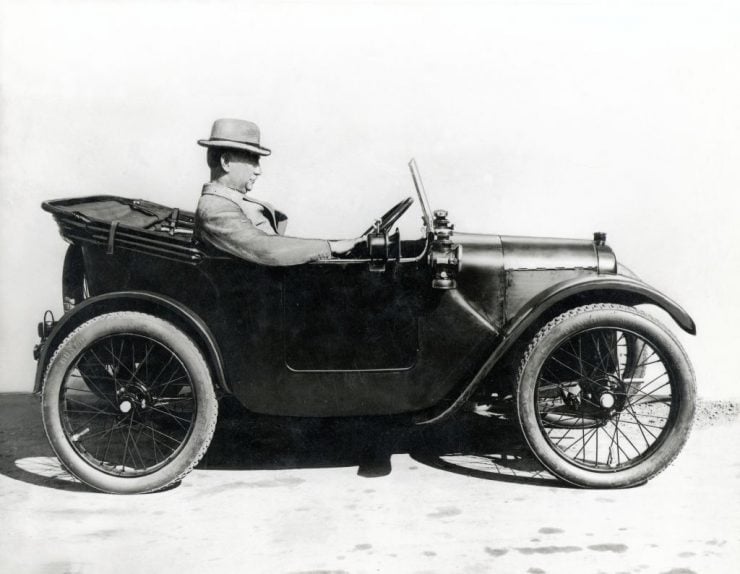
Stanley Edge set to work in consultation with Austin and his advisors on the new design. The engine was based on the existing Austin 20hp side-valve but scaled down to 696cc capacity providing an RAC rating of 7.2hp. The engine block was of cast iron as was the detachable cylinder head, while the crankcase was made of aluminum.
Stanley Edge had initially favored using a three main bearing crankshaft with a roller bearing at the rear and ball bearings at the front and center. It was decided to keep the engine as simple as possible however and so the early version was made with two main bearings, roller at the rear and ball bearing at the front, with splash lubrication.
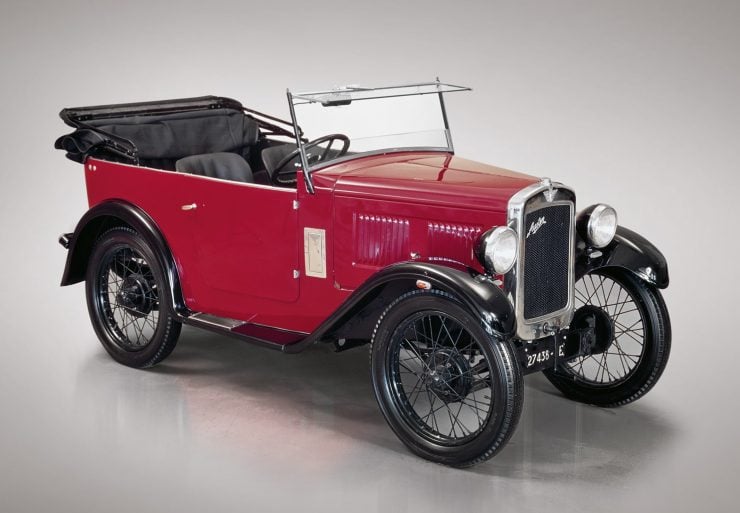
Edge also designed the three speed gearbox and clutch, while Herbert Austin busied himself with the design of the chassis and body. Austin used an “A” frame chassis with outriggers, the engine sitting between the frames at the apex of the “A” and with the front axle suspended by a transverse leaf spring.
A torque tube delivered engine power from the gearbox to the rear axle which was suspended by leaf springs. Steering was by worm and wheel, and the car featured brakes on all four wheels but with a unique catch – the foot-brake operated the rear brakes and a handbrake operated the front, in the motorcycle-style.
This may seem like odd thinking but it needs to be seen in the light of preferred British driving practice of the era. A good driver was expected not to need to use the brakes much at all but instead was to use the gearbox to slow the car. If the brakes of a vehicle are not up to the task of stopping it repeatedly this makes sense, and it was thought that this practice would save brake linings and therefore money.
So, the driver of an Austin 7 would expect to use the foot-brake (rear brakes) with a “heel and toe” gear-change down through the box to slow the car down, interspersed with use of the handbrake (front brakes). This is quite like the method taught for driving traditional heavy semi-trailer trucks in which the driver applies the the trailer brakes and goes down through the gearbox to slow the truck and not over stress the truck’s brake system.
Unlike the Ford Model T, the controls layout of the Austin 7 was in the style we have come to be familiar with. The clutch pedal to the left, brake pedal in the center, and accelerator/throttle pedal to the right. It was the first mass produced car to use this layout.
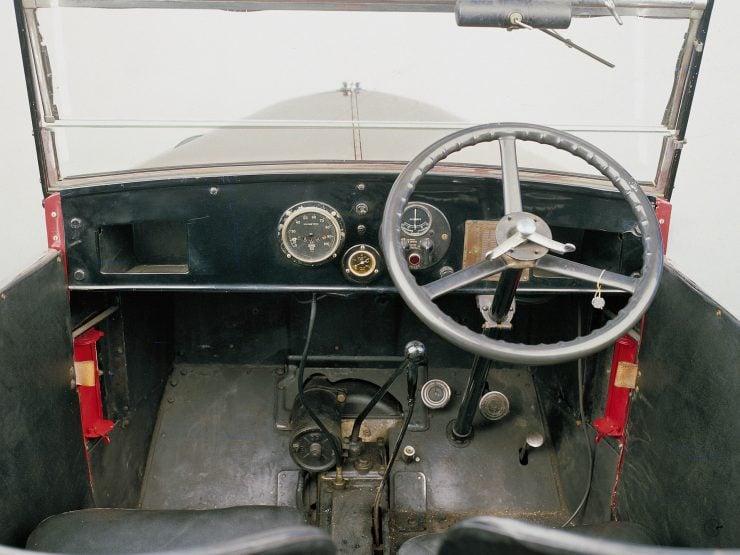
Herbert Austin’s team built three prototype Austin 7’s and showed them to the management at Austin Motor Company, and then to the British public in 1922. Herbert Austin had financed the creation of the new car himself and so had sensibly patented his innovations in his own name. This meant that he was able to charge Austin Motor Company royalties on the use of those patents of two guineas per car. (Note: a guinea was one pound and one shilling).
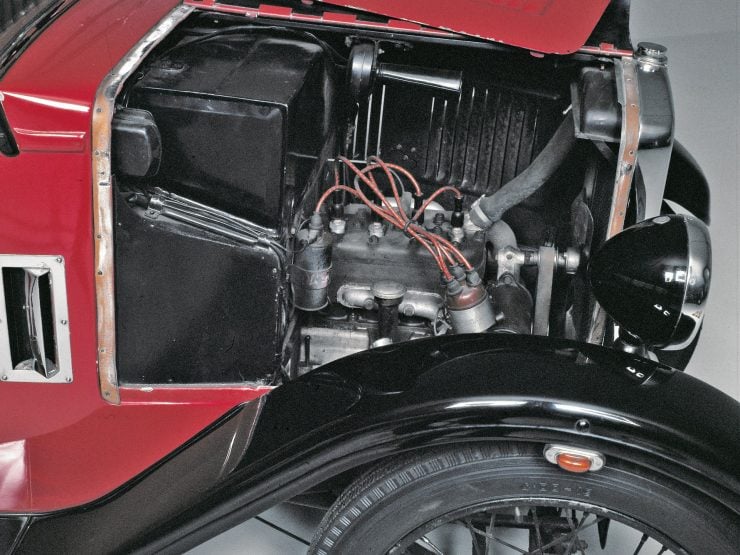
Production of the new Austin 7 began in 1923 with 2,500 being sold in the first year. Herbert Austin had hoped to sell double that number and perhaps was a little disappointed, but sales would grow over the succeeding years in a most satisfying way.
It would remain in production until the beginning of the Second World War in 1939, by which time 290,000 had been made. The “Big Car In Miniature” had eliminated the cycle cars and taken over as Britain’s equivalent of the Model T: like the Model T it brought car ownership to the masses.
Austin 7 – Specifications and Changes
Engine: 696cc side valve in-line four cylinder engine with cast iron cylinder block and removable cast iron cylinder head and two main bearings, roller at the rear and ball bearing at the front. Main bearings lubricated by jets from an oil gallery in the crankcase. Splash lubrication elsewhere. Aluminum crankcase. RAC rating 7.2hp.
This engine was increased in capacity to 747cc in March 1923, RAC rating 10.5hp. Later in 1936 the engine was given three main bearings; roller bearing at the rear, white metal in the center, and ball bearing at the front. RAC rating 10.5hp. Carburetor was a single downdraft type. The engine was started by crank-handle. Electric starter from 1923.
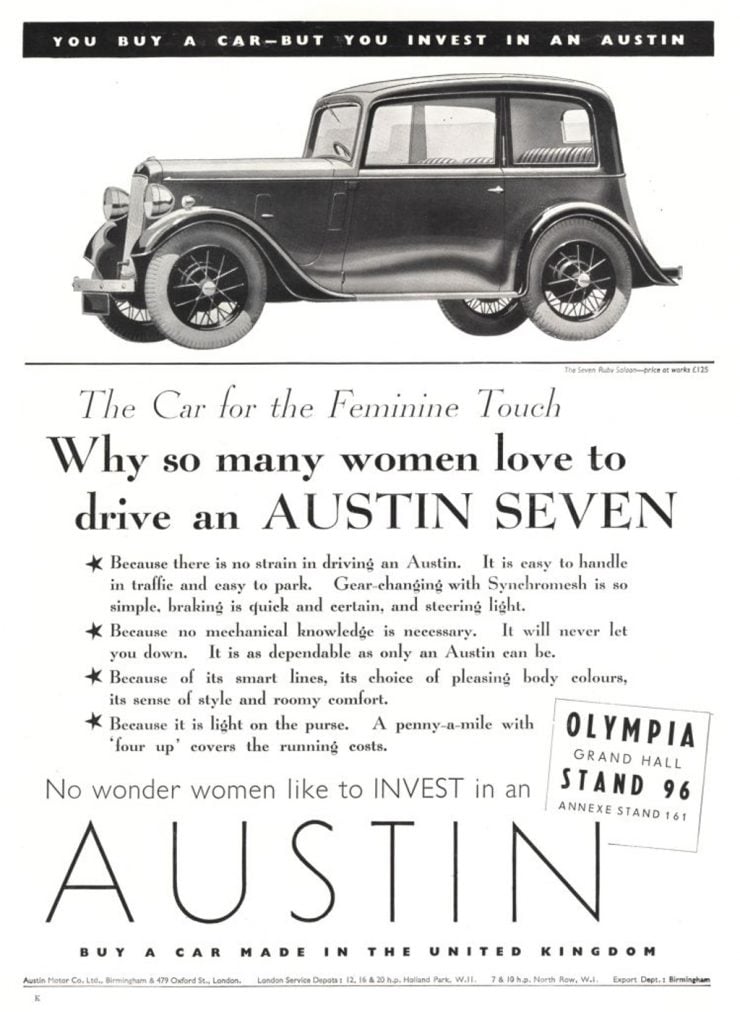
Ignition: Magneto up until 1928 when it was changed to coil.
Gearbox: Three forward speed and one reverse non-synchromesh gearbox. Four speed gearbox introduced in 1932. Synchromesh introduced onto third and fourth gears in 1933, and to second gear in 1934.
Clutch: Single cushion disc, dry plate.
Drive Train: Spiral bevel rear axle with torque tube.
Chassis: “A” frame.
Suspension: Front beam axle suspension by centrally mounted half-elliptic leaf spring. Rear axle, quarter elliptic springs cantilevered from the rear of the chassis.
Steering: Worm and Wheel.
Brakes: Drum brakes on all wheels. Foot pedal operated rear, handbrake lever operated front. Brakes became fully coupled and operated by the foot pedal in 1930.
Weight: 794lb.
The Austin 7 and the Beginnings of Jaguar
One of the most famous of all the coachbuilt versions of the Austin 7 were those built by Sir William Lyons and his partner William Walmsley. Together Lyons and Walmsley started the Swallow Sidecar Company in 1922. Their sidecar business flourished and they moved into a bigger building financed by Walmsley’s father.
This was timely as they were established in their new premises around the time the Austin 7 made its debut and William Lyons was particularly keen to get into the business of car manufacture. He managed to obtain an Austin 7 rolling chassis via a dealer in Bolton on which to construct the coachwork of the first Swallow car. The deal to obtain the Austin 7 chassis was done without Austin’s approval so it was a bit of an “under the counter” job. But it enabled them to get started.
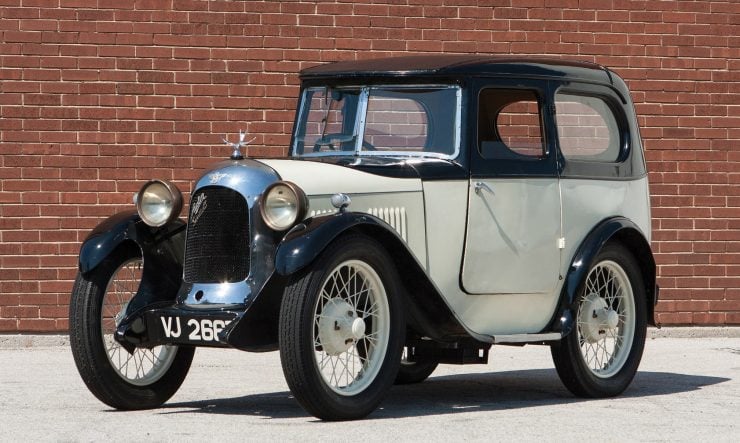
William Lyons got Swallow Sidecar’s only professional coachbuilder, Cyril Holland, to design the coachwork for the Austin 7. Holland had joined the company in 1926 and was known as the “Wood Butcher”. He was a draftsman and he was able to translate William Lyons’ sketches into proper drawings for the Austin 7 based coachwork.
The first version was completed in 1927 and shown to Austin, who specified changes they thought necessary to ensure the bodywork met their standards. With the design approved the car was shown to London dealer Henlys who placed an order for 500 cars in two seater and in four seater saloon style. The cars sold for £175 and with their artistic style and eye catching color schemes became a sought after item.
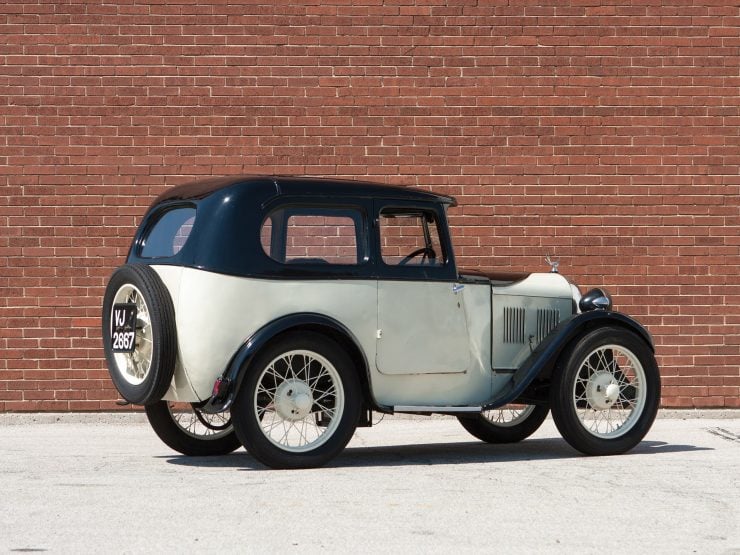
The Swallow style coachwork on the Austin 7 chassis became increasingly popular and William Lyons could see he had moved a significant step closer to achieving his goal of becoming a car manufacturer. The company decided to move to Coventry to be more ideally placed to both expand, and to achieve William Lyons’ vision.
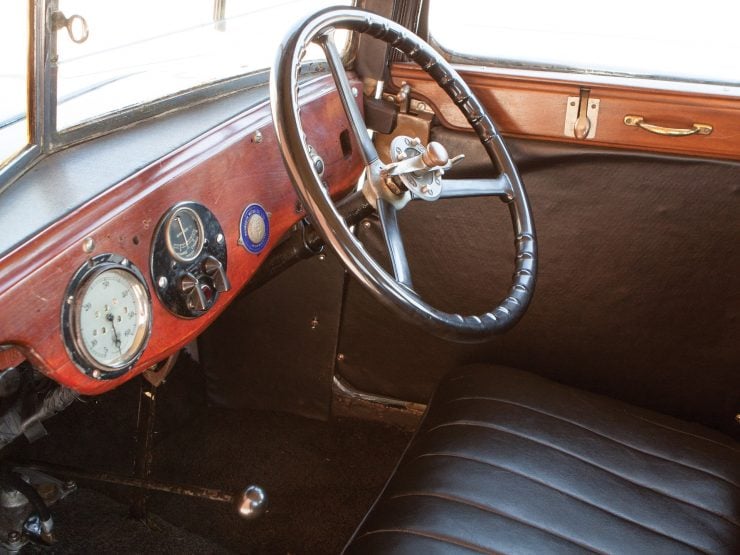
William Lyons took out a stand at the 1929 London Motor Show shortly after having moved the company to their new Holbrook Lane, Coventry premises. That year he expanded his model line-up to include cars built not only on the Austin 7 chassis, but also on chassis by Standard, Swift, and Fiat. By this time the company was named the Swallow Coachbuilding Company, and after WW2 the name was changed to Jaguar.
Austin 7’s Built Under License
The Austin 7 was discovered by people throughout the British Empire and the little cars were packed into cargo ships and traveled to all sorts of exotic places. Australia, after the First World War, was keen to establish its own car industry, recognizing not only that Australians were going to be adopting cars en-mass, but also that the Nation needed to learn the lessons of the First World War and ensure that she was self sufficient in her ability to produce not only arms and ammunition, but also vehicles for military service. To this end the Australian Government imposed tariffs on imported cars but not on imported rolling chassis.
The government realized that it was too tall an order to simply create a complete car industry from scratch, but that it was possible to springboard a coachbuilding industry and then use that foundation to establish full blown car production.
The Austin 7 played a major role in this and the rolling chassis were imported and then fitted with bodywork by Holden’s Motor Body Builders (Which later became GM Holden and built Australia’s first completely independently designed and built car). There were quite a number of coachbuilders working on Austin 7’s in the major cities of Melbourne, Sydney, Adelaide, and Perth.

Not only did the Austin 7 achieve popularity in Britain and the British Commonwealth but it also was made in Germany, France, and Japan. In Germany AWE (Automobilwerk Eisenach) assembled their first 100 Austin 7 based cars from CKD (Completely Knocked Down) Austin 7 kits imported from Austin in Britain. They then manufactured their own version under license which enabled them to produce 2,000 cars per year.
These cars were marketed under the name “Dixi” and when BMW bought AWE in 1928 they initially marketed the car as the BMW Dixi. Subsequently they were given the model name DA-1 3/15PS, the “DA” standing for Deutsche Ausführung (i.e. German Version), the “3” indicating the licensing category, and the “15” the actual horsepower (as opposed to the RAC rating).
In France car maker Lucien Rosengart obtained a license to make Austin 7’s. His factory was in Paris and he called the car the LR2. The Rosengart LR2 was in production from 1927 until 1939, but the factory was destroyed by the invading German forces. Lucien Rosengart spent the war years in the United States and returned to Paris at the war’s end and attempted to re-start his car making business, without success.
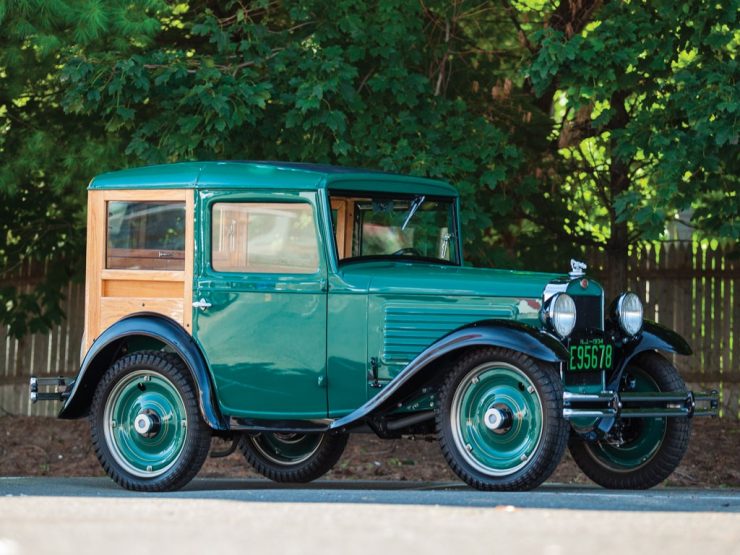
The little Austin 7 also made its way “across the pond” to the United States where a company named American Austin Car Company was established in 1929. So the Austin 7 was made in American style.
The company was re-organized in 1935 and re-named American Bantam. This was the company that created the first Jeep prototype, and one of the American Bantam Jeep models was discovered by the invading Japanese forces in the Philippines during the Second World War. That car became the design inspiration for the Toyota Landcruiser.
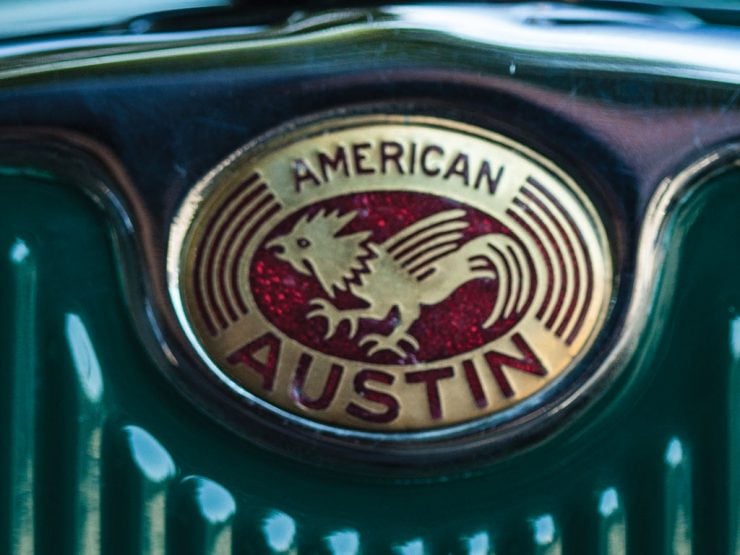
Prior to the Japanese using an American Bantam as their source of design inspiration, back in the 1920’s, they also used the Austin 7 as the basis for an early Nissan car, the Datsun Type 11. In October and November of 1929 Austin’s Chief Engineer had visited Japan and presented a paper titled “The British Light Car” which provided quite complete technical details. The Datsun Type 11 appeared in 1932 and was fitted with a 495cc DAT in-line four cylinder side-valve engine and three speed manual gearbox.
Herbert Austin was sufficiently concerned about the potential infringement of his patents that he purchased a Datsun car in 1935 in order to examine it. He did not pursue a complaint and that might be for a number of reasons, including Japan’s militarization at that time. They were by then already at war in China.
The Austin 7 as a Racing Car
Implausible as it might sound the Austin 7 became a racing car and has been tied to some of the great names in motorsport, including Colin Chapman of Lotus Cars, and Bruce McLaren. The beginnings of the Austin 7’s venture into motor sport began in a rather unlikely way, on the First World War battlefield of Gallipoli where Australian troops were engaged in a bloody battle with Turkish soldiers of German ally, the Ottoman Empire.
Involved in that battle was Australian Captain Arthur Waite, who was wounded and hospitalized. In the hospital he met one of Herbert Austin’s two daughters, Irene Austin. Captain Waite and Irene Austin were married and he joined his father in law in the family business.
Arthur Waite was keen to take the little Austin 7 racing and in 1923 delivered successes at the Easter Monday Small Handicap race at Brooklands, which he won, and in April at the 250km Monza Grand Prix des Cycle Cars which he also won. Arthur Waite then went for a trifecta and entered the Whitsun Handicap Race at Brooklands but despite lapping at 70 mph finished second, an impressive result.
The Austin 7’s engine had not been designed for the rigors of racing and its lubrication system proved inadequate. These problems were addressed and the Austin 7’s engine became remarkably reliable at racing speeds. Driver Gordon England had a lightweight racing car built which featured a body that weighed a scant 20 lbs and with that he took second place in the Brooklands 200 mile race of October 1923 and proceeded to set six Brooklands records. He was lapping Brooklands at 80 mph.
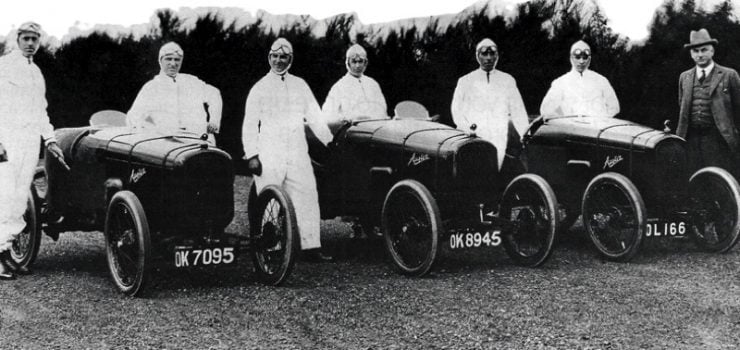
These racing successes did not do any harm to the Austin 7’s reputation and so Austin created two competition models in January 1924; the Sports, and a replica of the Gordon England special called the Brooklands Super Sports.
As the 1920’s progressed Arthur Waite wanted to lift engine power further and the best way to accomplish that seemed to be to supercharge the little engine. A Rootes type supercharger was fitted to the front of then engine and with the power almost doubled from 20 hp to 34 hp Waite almost made his target of 100 mph, achieving 94.44 mph.
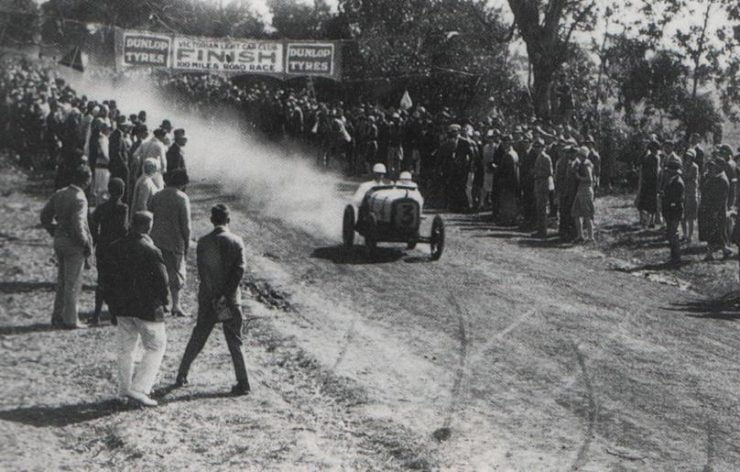
The “piece de resistance” for the Austin 7 was to be outright victory in the inaugural Australian Grand Prix of 1928.
In 1927 Arthur Waite had returned to Australia to work with Austin Distributors Proprietary Ltd., an Austin dealership in the city of Melbourne in the state of Victoria. For 1928 a motor race was organized by the Victorian Light Car Club at the Philip Island circuit in Victoria on August 31st. The race was called the “100 Miles Race” and would later be recognized as the inaugural Australian Grand Prix.
Arthur Waite requested his supercharged racing car to be shipped to Australia for the race. He was a bit disappointed when he found that a different car had been shipped, but it was a supercharged racing car and that would have to do. It did rather well and Arthur Waite won the race with the result that sales of the Austin 7 improved in a most satisfactory way.
The Austin 7 would go on to be an influential car long after production had ceased and it had been superseded by other much more developed automobiles. An Austin 7 “Ulster” was racing legend Bruce McLaren’s first car and he cut his racing car teeth restoring that old Austin 7 and began in a hillclimb in 1952, and then his first real race.
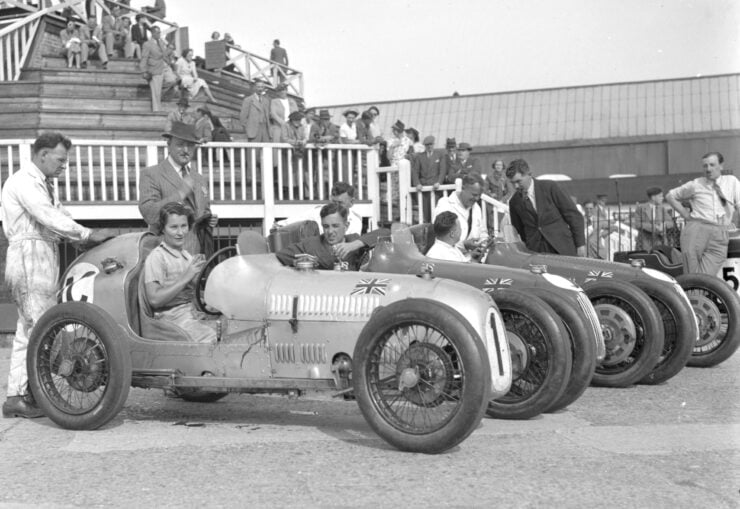
Colin Chapman, founder of Lotus Cars, was another icon of motor racing and sports car construction who started out with an Austin 7. While still studying at the University of London he re-built an old Austin 7 to make it into a trials car. Chapman’s car had a modified engine, suspension, and a body made with a wood frame and sheet aluminum. No doubt he had a lot of fun with it both in the workshop, and in competition.
Conclusion
The Austin 7 might be described as the car least likely to have had a major impact on the car industry and motorsport, but it proved to be a great source of income for Austin and cemented them as a major car maker for Britain and her Empire. It was a car on which at least two greats of motorsport made their humble beginnings, and it held numerous records at the Brooklands racing circuit.
The Austin 7 has been described as Britain’s equivalent of the Model T. It was half the size, but it probably does qualify as that. It brought car ownership and the freedom of the open road to a great many people, and for many, like yours truly, it was the car we did our first ever road trip in, a memory so vivid I can still remember the smell of the wood, leather and engine oil.
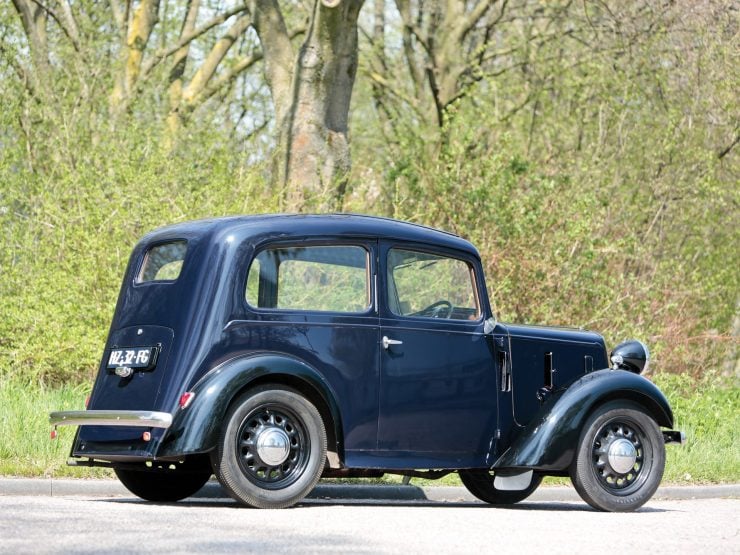
Photo Credits: RM Sotheby’s, Birmingham Museums Trust, The Official 50-race history of the Australian Grand Prix, and the State Library of Western Australia.


